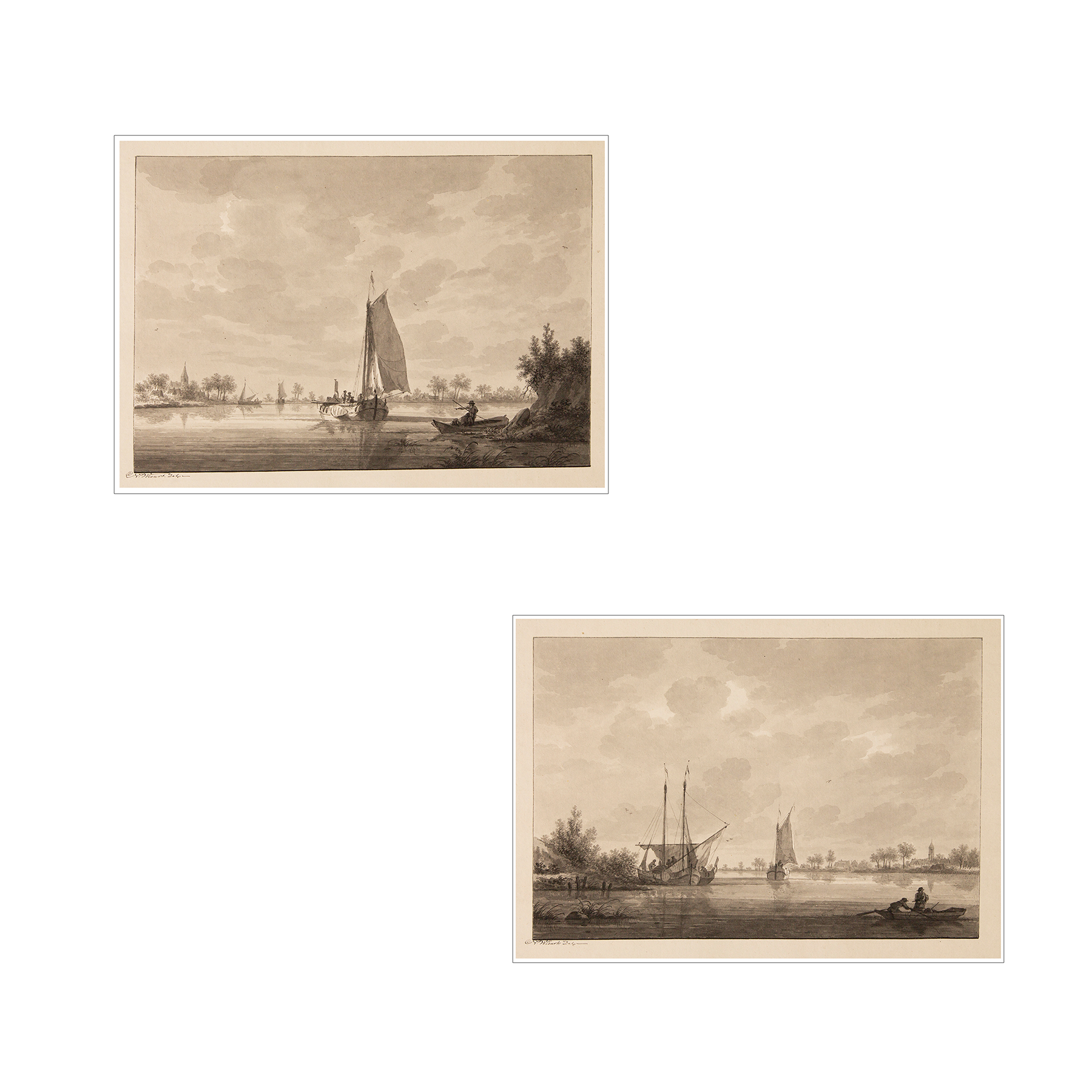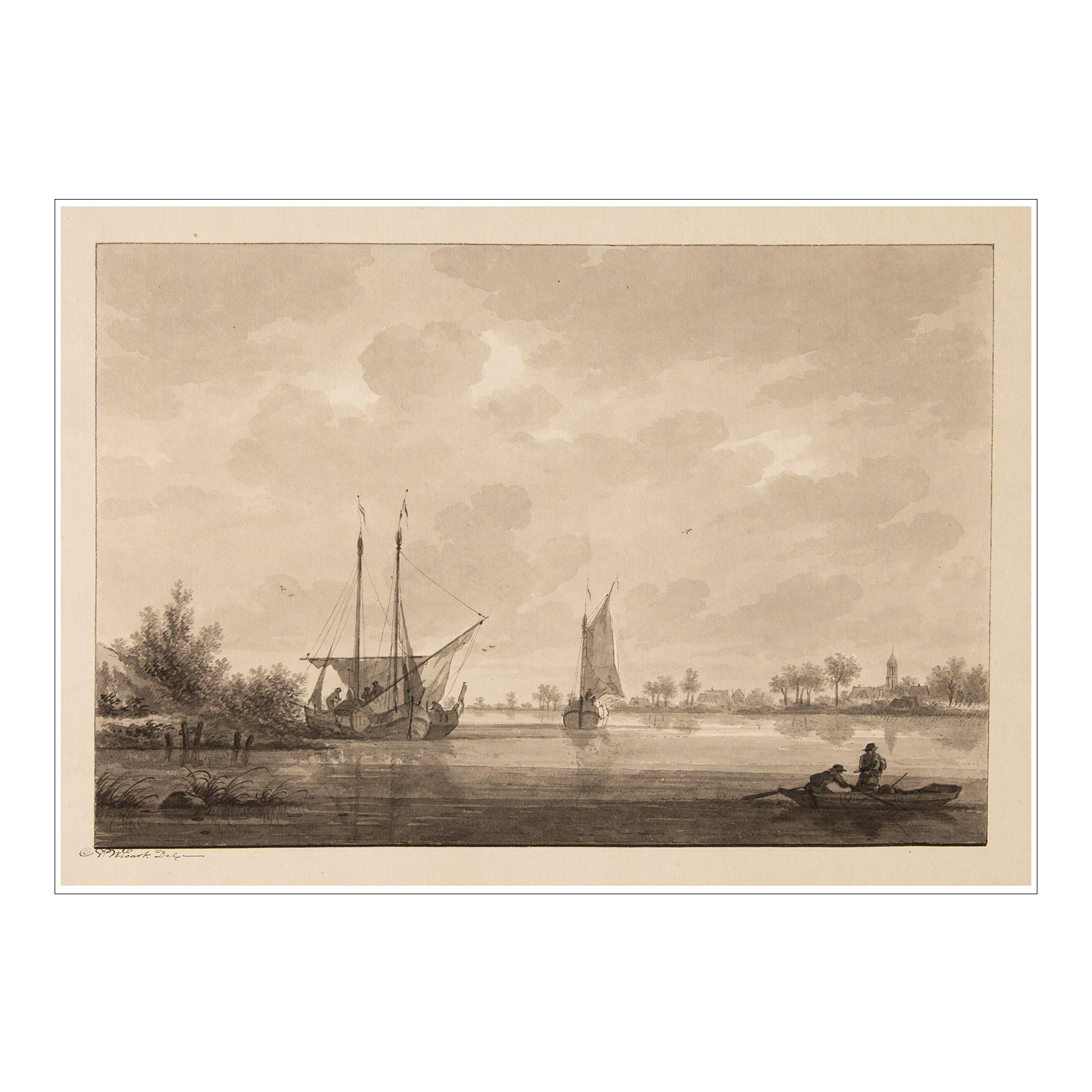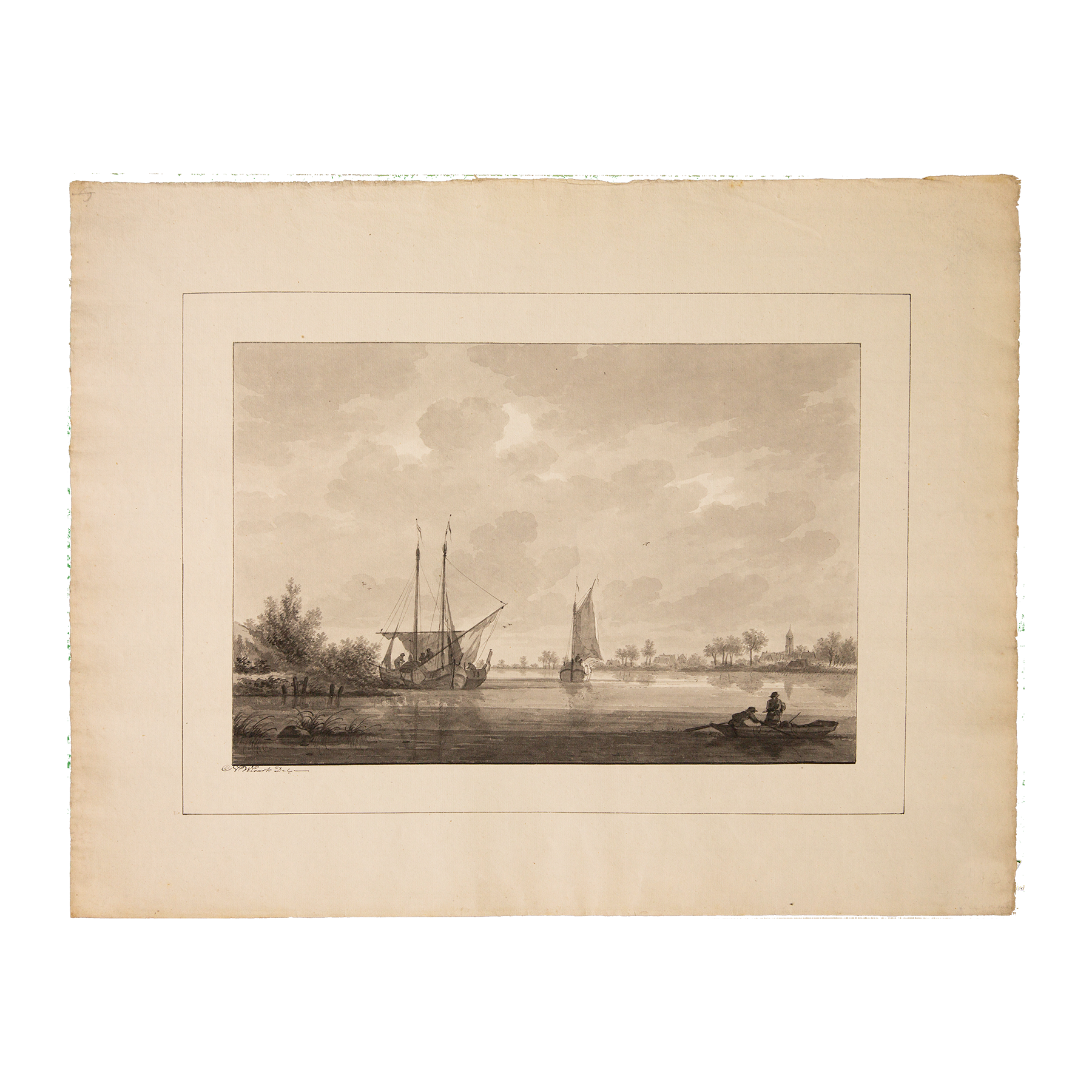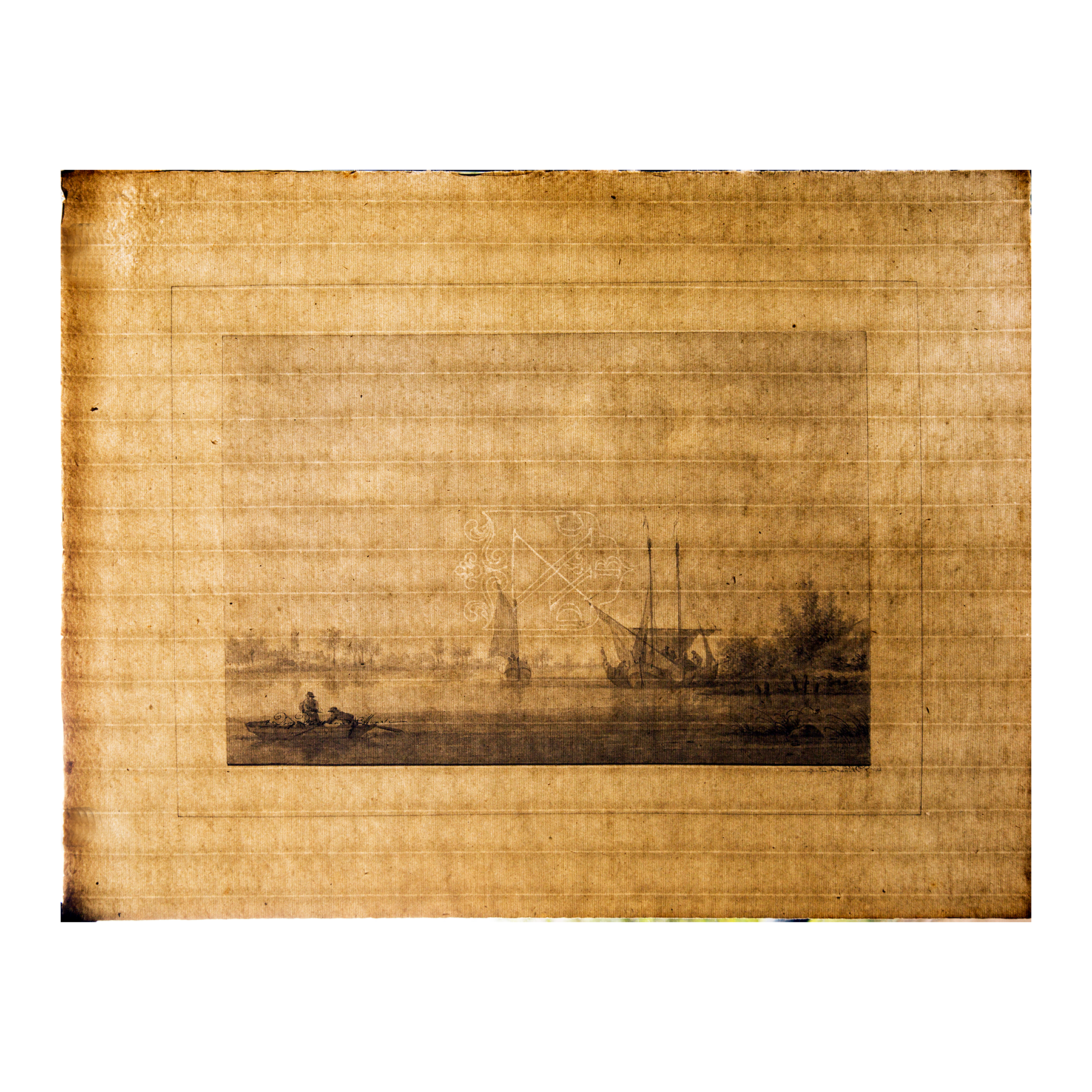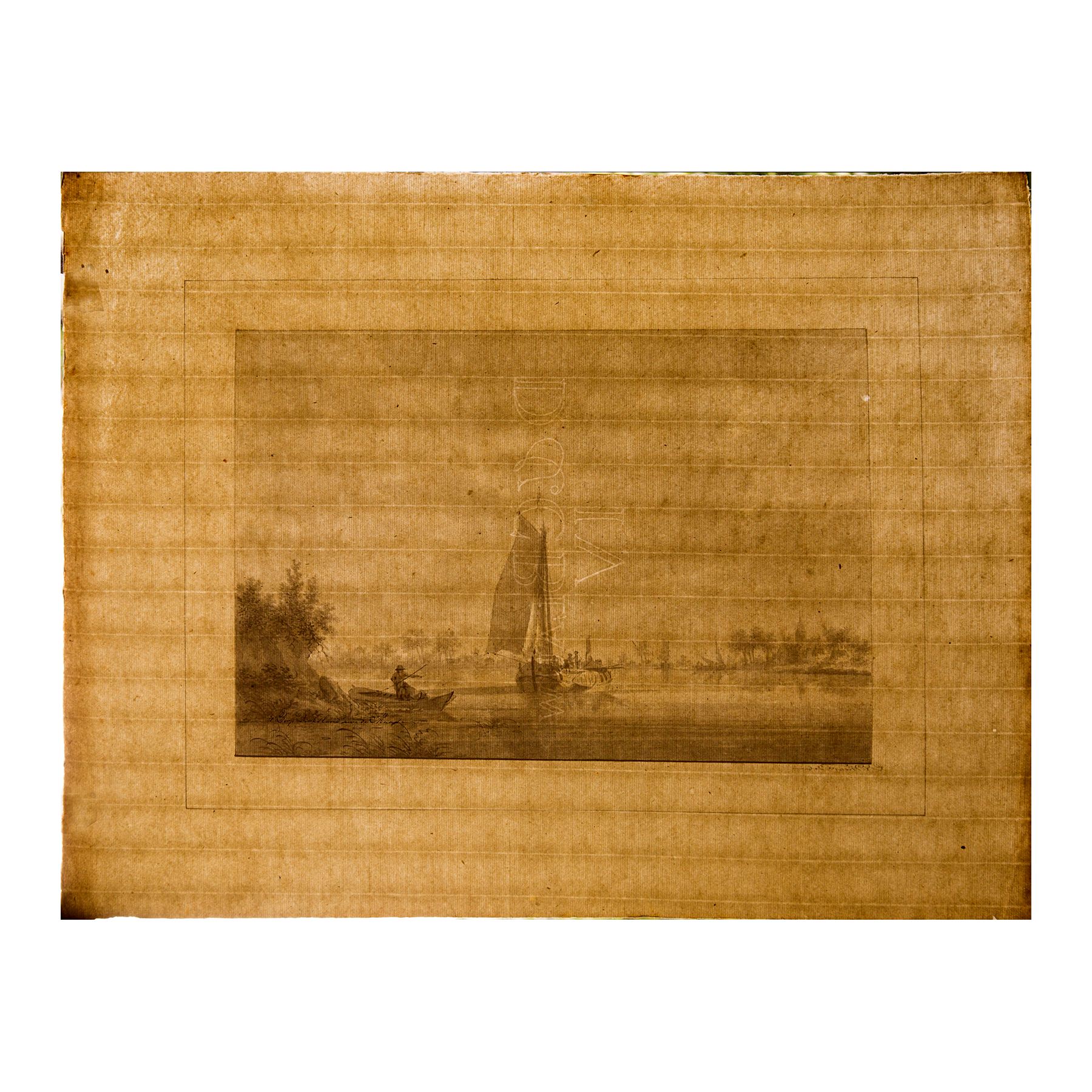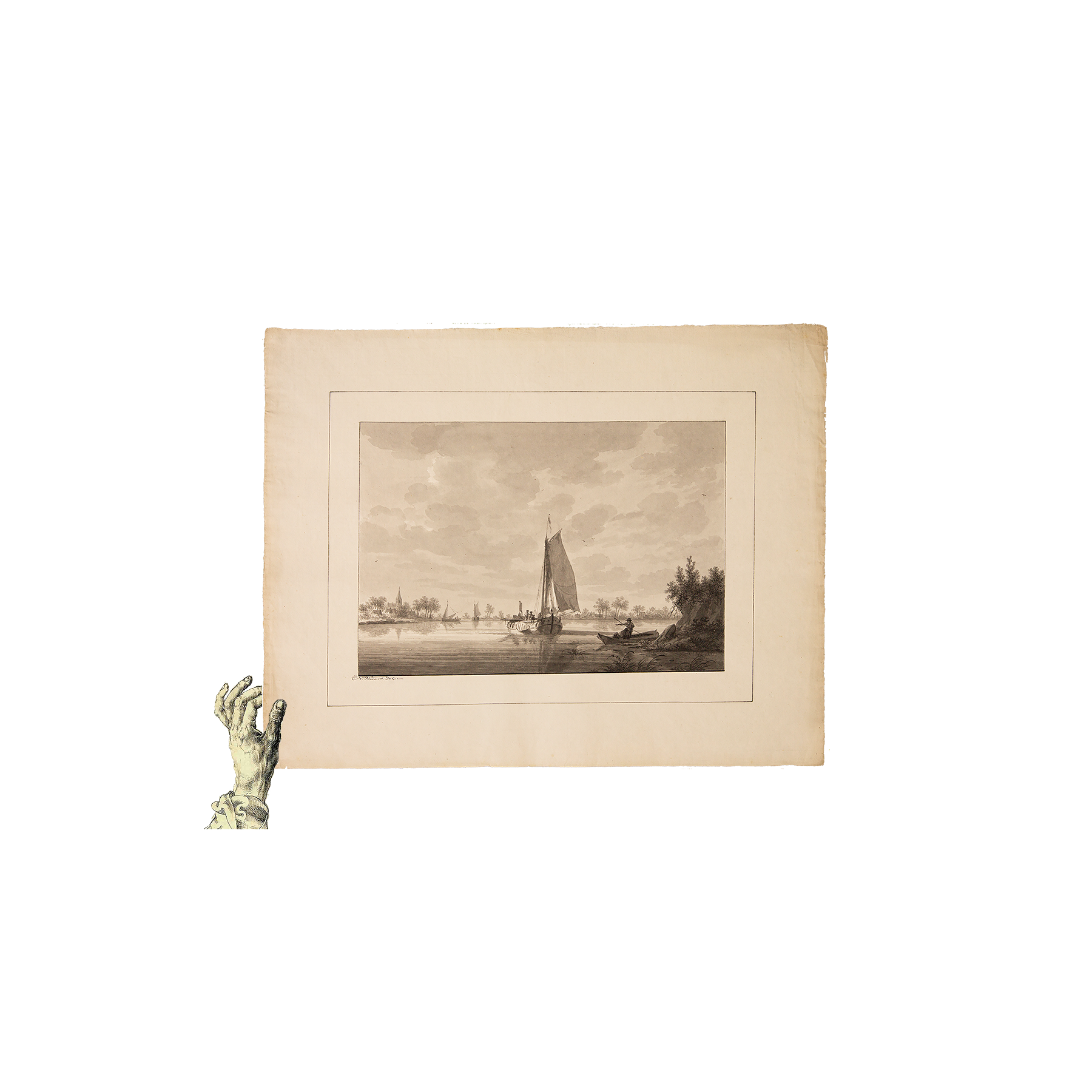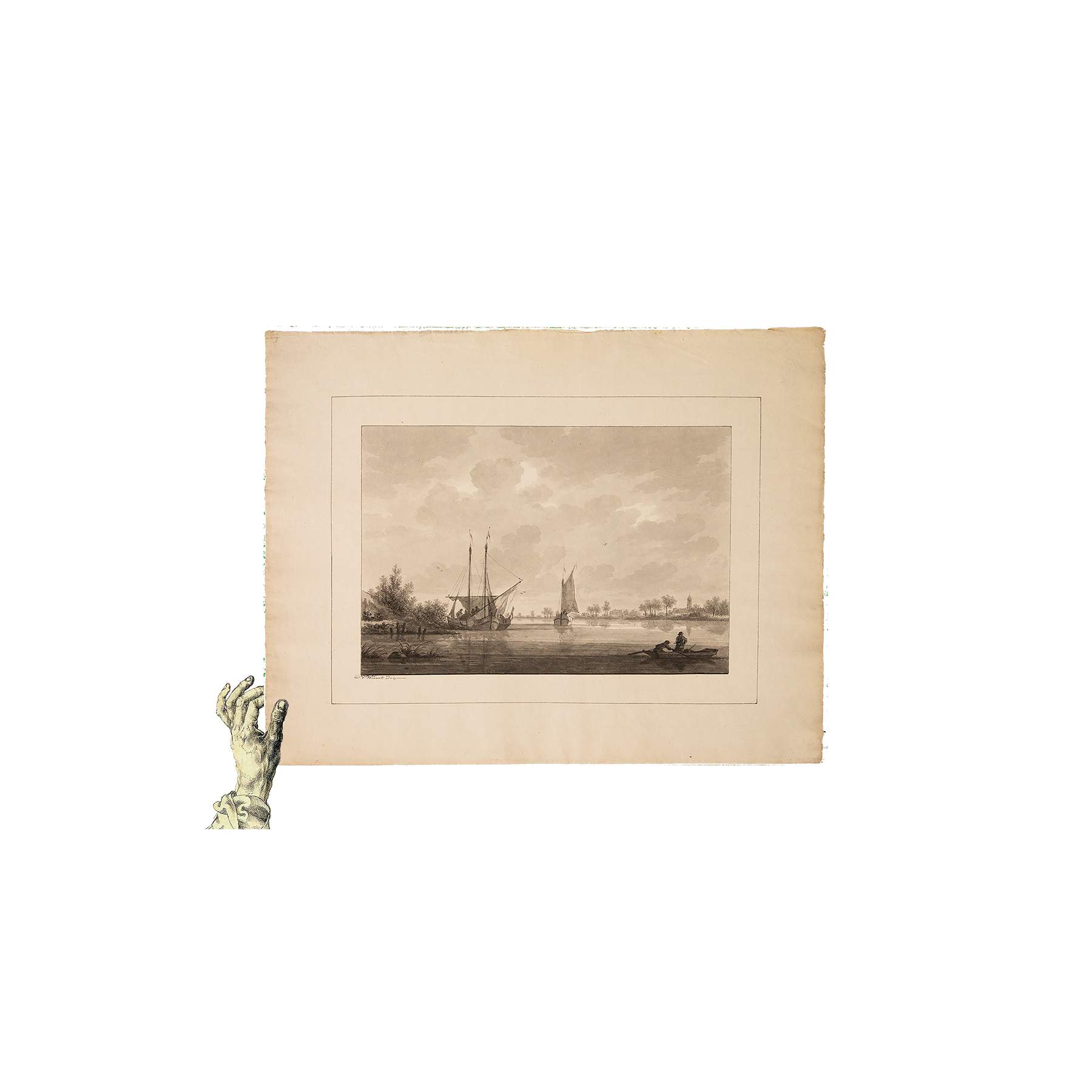Nicolaas Wicart
Utrecht, 1748 – Utrecht, 1815
Fishing scene on the banks of the Meuse
Black chalk, black ink and gray wash on black chalk lines. Framing line on the mount
Signed, bottom left, on the mount : N: Wicart. Del
Annotated with the pen back and black ink : t Dorp Dirksland aan de Maas ( the village of Dirksland on the Meuse ).
295 x 436 mm – 11 5/8 x 17 3/16 in;507 x 668 mm – 19 15/16 x 26 5/16 in. ( sheet ).
Watermark: D. & C. Blauw IV
Nicolaas Wicart
Utrecht, 1748 – Utrecht, 1815
Fishing scene on the banks of the Meuse
Black chalk, black ink and gray wash on black chalk lines. Framing line on mount.
Signed, bottom left, on the mount : N: Wicart. Del
Annotated at the back with ink : t Dorp Diest aan de Maas (the village of Diest on the Meuse).
296 x 439 mm; 514 x 665 mm ( sheet ) – 11 5/8 x 17 5/16 in. ; 20 1/4 x 26 3/16 in. ( sheet ).
Watermark: D. & C. Blauw.
Born in Utrecht in 1748, Nicolaas Wicart is mainly known as a porcelain painter, active in Loosdrecht between 1777 and 1784, and as a landscape designer in the provinces of South Holland, Gelderland, Brabant and Utrecht. The technique of mainly using blue in his drawings recalls his work on porcelain.
This river landscape is typical of the works of Nicolaas Wicart and can be dated between the years 1777 and 1784 during one of his travels on the banks of the Meuse. This drawing, in grisaille, can be compared in style and technique to other works by the artist preserved in the Royal Museums of Brussels, at the Frans Hals Museum in Harlem, at the British Museum in London, the Victoria and Albert Museum in London or at the Albertina in Vienna.
Annotation on the back of the sheet mentioning the place is a habit[ 1 ] taken by the artist as you can see on a View of the village of Kapel on the Yssel river[ 2 ] kept at the British Museum in London. The same way to sign at the bottom left N: Wicart. Del is found on a View of Rotterdam from the Meuse with sailboats[ 3 ], on a View of Houten[ 4 ] and on one View of the village of Oud-Loosdrecht[ 5 ].
The artist has probably produced this pen and wash drawing as a finished work, for sale to amateurs and not as a preparatory work for a painting.
Condition report: Perfect general condition
[ 1 ] Even if the artist often adds the name of a village to the back of his works, the topographic location is not always precise. [ 2 ] London, British Museum, Inv. 1875.0814.1190, registration on the back : t Dorp Kapela an den Yssel [ 3 ] London, British Museum, inv. 1895.0617.410 [ 4 ] Amsterdam, Rijksmuseum, Inv. RP-T-1889-A-2232 [ 5 ] Amsterdam, Rijksmuseum, Inv. RP-T-1889-A-2233
